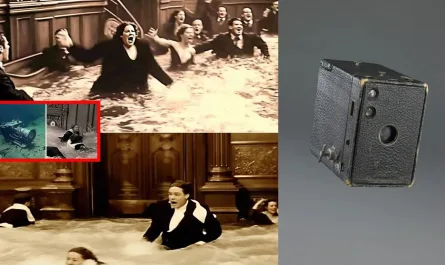The Meister Print: A Controversial Fossil and the Debate Over Human History
In 1968, an amateur fossil collector named William J. Meister made a startling discovery in the Cambrian Wheeler Formation near Antelope Springs, Utah. While splitting a slate block in search of trilobite fossils, he uncovered what appeared to be a fossilized shoe print, approximately 10.25 inches long and 3.5 inches wide, with two trilobites embedded within it. Dated to roughly 500 million years ago, this find—known as the Meister Print—has sparked intense debate, challenging conventional timelines of human existence and igniting controversy between creationists and mainstream scientists.
The Discovery
Meister, accompanied by his family and friends, was hunting for trilobite fossils in the Wheeler Formation, a 500-million-year-old deposit from the Cambrian period, when he split open a two-inch-thick slab. The slab revealed a distinct impression resembling a sandal or shoe print, complete with a heel mark depressed 3 millimeters deeper than the rest, suggesting wear typical of a right foot. Embedded in the heel were two trilobite fossils, extinct marine arthropods that lived between 521 and 252 million years ago. The print’s apparent human-like shape and its geological context—predating the earliest known hominids by hundreds of millions of years—stunned Meister and fueled speculation about its origins.
Scientific Scrutiny and Skepticism
The Meister Print quickly drew attention, but mainstream scientists were skeptical. Paleontologists, including James Madsen of the University of Utah, dismissed the idea of a human footprint from the Cambrian period, noting that vertebrates had not yet evolved 500 million years ago. The print was examined and attributed to natural geological processes, specifically spall formation—a phenomenon where rock slabs fracture and erode into shapes that can mimic footprints. Critics pointed out the lack of pressure deformation or foot movement in the print, as well as a crack running across the slab that aligned with the supposed heel, suggesting it was a natural feature rather than a footprint.
In 1969, geologist Maurice Carlisle and Dr. Clarence Combs visited the site and noted a layer of muck at the same stratigraphic level, indicating the print was once on a surface. However, this did not sway the scientific consensus, which maintained that the formation was not a genuine footprint. Similar skepticism greeted other alleged out-of-place artifacts, like the Petrified Shoe Sole found by John T. Reid in Nevada in 1922. Reid’s find, in Triassic sediment (approximately 200 million years old), was also dismissed as a natural formation despite his claims of human craftsmanship, with scientists at the American Museum of Natural History calling it an “imitation of an artificial object.”
Creationist Claims and Public Debate
The Meister Print became a focal point for creationists, who cited it as evidence against evolutionary timelines and in support of a young Earth. In a 1970 article, Melvin A. Cook, a chemist, not a paleontologist, argued the print challenged geological science. It was later presented in a 1973 creation-evolution debate at California State University, where creationists claimed it had been validated by multiple laboratories. However, these claims were refuted, with institutions like the University of Utah denying any such validation. Other creationists, including Clifford Burdick, reported additional prints in the area, such as a supposed child’s barefoot impression, but these were similarly debunked as lacking the characteristics of genuine footprints.

Geological and Paleontological Context
The Wheeler Formation, where the Meister Print was found, is a marine deposit rich in trilobite fossils, formed in a shallow seabed environment. Trilobites, with their calcified exoskeletons, are among the most common fossils from the Cambrian period, but no evidence suggests humans or even terrestrial vertebrates existed at this time. The earliest hominids appeared around 7 million years ago, and shoe-like footwear only emerged within the last 10,000 years. The presence of a “shoe print” in such ancient strata would require an extraordinary revision of evolutionary and geological timelines, a claim unsupported by the broader fossil record.
Parallels and Broader Implications
The Meister Print is not an isolated case. Similar claims, like the Paluxy River “human” footprints alongside dinosaur tracks, have been debunked as misinterpretations or natural formations. The Petrified Shoe Sole, found by Reid, faced similar dismissal despite initial excitement. These cases highlight a recurring tension between sensational finds and rigorous scientific scrutiny. While the Meister Print and similar artifacts captivate the public imagination—raising questions about time travel, ancient civilizations, or extraterrestrial visitors—they lack the diagnostic features of authentic footprints, such as pressure ridges or consistent anatomical detail.
A Lasting Enigma
The Meister Print remains a polarizing artifact. For creationists, it symbolizes potential flaws in evolutionary theory; for scientists, it is a cautionary tale of pareidolia and geological misinterpretation. Its discovery underscores the allure of out-of-place artifacts and the challenges of reconciling them with established science. Housed at the Creation Evidence Museum, the print continues to inspire debate, reminding us that the past still holds mysteries—some more perplexing than others.


